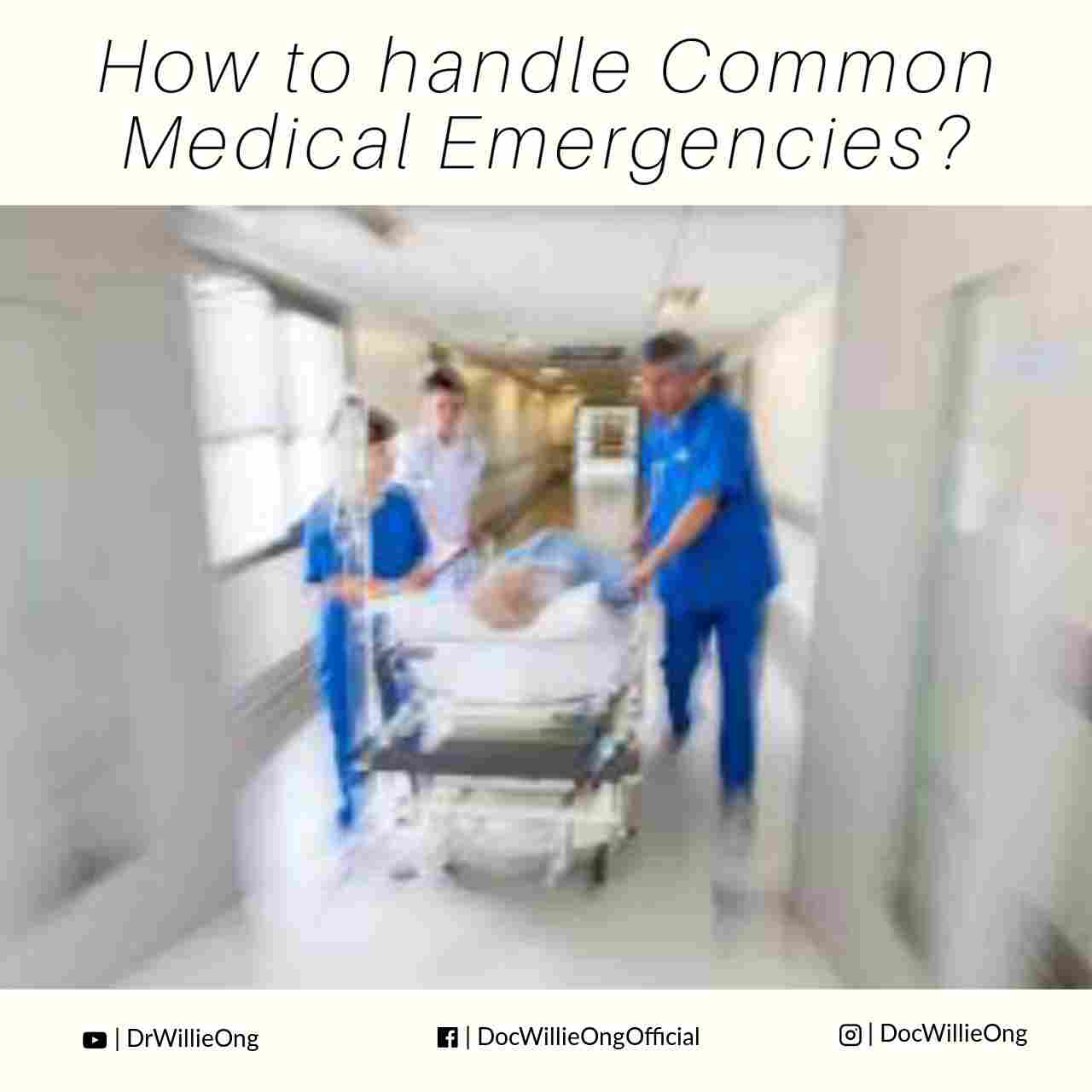Dr. Willie Ong (Internist and Cardiologist)
Imagine receiving a call saying that a family member is sick. What should you do? What’s the first aid in this situation? During emergencies, it pays to be knowledgeable in basic home remedies and first aid. Let’s look at nine common problems:
1. Diarrhea.
The first aid for diarrhea is giving Oresol or an oral rehydrating solution, which you can buy in a drugstore. Actually, you can make your own rehydrating solution as follows: Mix one glass of water with two teaspoons of sugar and one-fourth teaspoon (just a pinch) of salt. Stir well and drink as much as you can. Children and adults can also be fed rice water (“am”) with a little salt added. These liquids help replenish the fluids and electrolytes lost in the stools. In addition, doctors recommend the BRAT diet, which stands for banana, rice, apple and tea. However, if the patient cannot drink or eat anymore, it’s time to bring him to the hospital where doctors will give fluids through the vein. A common cause of diarrhea is intake of spoiled or contaminated food.
2. Minor Burns.
This is important. Once a person gets burned, for example, a hand burn from boiling water, immediately place the burned area in anything cold. You can expose the hand to running water, or better yet, you can submerge the hand in a bucket of iced water. The cold water will counteract the heat generated from the burned area and thereby minimize the skin and tissue damage. You don’t need to put tomatoes, toothpaste or what have you. It’s not helpful. Once the heat from the area subsides, you can apply burn ointment on the affected part. Then cover the skin with a clean gauze. Later on, the burned area will usually develop into a blister. Do not poke the blister or it may get infected. Just leave it alone and let it subside by itself. For more serious burns, however, you should go to an emergency room for further treatment.
3. Object inside ear or nose.
This usually happens with kids. The safest thing to do is to bring the kid to the Emergency Room or an ENT specialist. Take note: Do not attempt to remove the foreign object on your own. Do not poke cotton buds or toothpicks inside the ear. You will only push the object further inside and you might even puncture the eardrum. Likewise, don’t force the kid to sneeze the object out. Just keep your child calm. This is one time you really need to see your doctor.
4. Swallowed object.
If the swallowed object is small, like a button or a bead, the doctor will just ask the parents to observe the child for symptoms, such as stomach ache or difficulty of breathing. Normally, the child will pass out the swallowed object with the stools in one to two days. However, when the swallowed object is large or pointed, it’s best to bring him to the hospital. The doctor will probably request for an x-ray to see where the object is located. Follow your doctor’s advice.
5. Foreign body in the eye.
In case of dust and foreign objects in your eye, the first thing to do is to wash the eye in running water. Don’t scrub your eye, but just let the water wash out the object. Hopefully, this will do the trick. If an eyelash gets into the eye, just blink your eyes several times, and slowly your tears will transport the object outside. In some special cases, an experienced person can use a cotton bud to remove the object. But if the foreign body is still there after some time, it’s best to see an eye specialist.
6. Insect bite from a mosquito, ant or bed bug.
First, clean the bite area with soap and water. Then, get a cube of ice and place it on the bite area. This should lessen the itchiness and redness. Next, you can dab the area regularly with 70% rubbing alcohol or povidone iodine. Keep the area clean until it heals. Avoid the urge to scratch the area because you might injure the skin and infect the area.
7. Nose bleeding.
Especially common during the hot weather, most cases of nose bleeding are
harmless and nothing to worry about. At times, picking the nose can cause nose bleeding. When bleeding occurs, let the patient sit down and tilt the head slightly upward. Then firmly pinch on the top part of the nose to see if this will stop the bleeding. You may also place an ice bag on the bridge of the nose to help the blood clot more quickly. In the meantime, keep the patient calm and let him breathe slowly through the mouth. Usually, the bleeding will stop in a few minutes. However, in case it doesn’t, go to the Emergency Room.
8. Bump in the head.
If your child bumps his head, let the child lie down and then place an ice bag on the affected area to lessen the swelling. In case there is some bleeding in the area, it is best to clean the area with Povidone iodine or alcohol. (I prefer Povidone iodine because it is more potent and less painful.) Next, place a clean gauze on the area. Most head bumps are harmless since our hard skull protects our brain. Still, patients should still be observed for drowsiness, vomiting and severe headache in the next few days. For more serious bumps, you can proceed to a hospital where doctors might request a head x-ray (to check for fracture) or a CT Scan of the head (to check for bleeding).
9. Bite from a dog, cat or rat.
Immediately wash the bite area with soap and running water. There’s no harm in pinching the area to try and squeeze out blood and saliva from the animal. After cleaning the area, apply Povidone iodine to further sterilize it. Then place a clean gauze over the area. For dog bites, the animal should be observed for ten days. If the dog is healthy after ten days, then that means the dog has no rabies. Finally, for more serious bites, like deep animal bites and those bites near the neck area, you should bring the patient to the hospital for anti-tetanus shots and possibly anti-rabies shots. Good luck!



